 So I landed in Rio de Janeiro, for two weeks, during the 2016 Rio Summer Olympics. I have been in Rio countless times, but always discovering new locations, hotels, restaurants and attractions. These are some of my findings during my recent visit. Also see all my minute-to-minute past/current/future posts and experiences in Rio de Janeiro.
So I landed in Rio de Janeiro, for two weeks, during the 2016 Rio Summer Olympics. I have been in Rio countless times, but always discovering new locations, hotels, restaurants and attractions. These are some of my findings during my recent visit. Also see all my minute-to-minute past/current/future posts and experiences in Rio de Janeiro.
 I came to Rio de Janeiro, commissioned by my corporate client NBCUniversal, to create bespoke experiences for the VIP guests and executives during the course of the 2016 Rio Summer Olympics. Two full weeks of hard work, but also with time to explore the city on my own and discover new options to share with you all.
I was lucky enough to take part of most of the main Olympic events, like the Opening Ceremony at the Maracana Stadium and some of the Gymnastics Competition at the Olympic Village.
Rio de Janeiro is destination with such sex-appeal and so many layers to be explored. Of course during my time either working or on my own private time, I have enjoyed most of them. Of course during my time there, I came 4 times to the Corcovado to see the Christ Redeemer on a private experience we’ve created for our guests. Or spent time walking by Botafogo overlooking the Bay of Guanabara , Urca and the Sugar Loaf or walking by Copacabana and Ipanema Beach while enjoying a fresh coconut. But most of you know this side of Rio de Janeiro.
I had to repeat some of the top experiences I have scouted in the past, for my clients to enjoy and embrace the soul of the Carioca spirit. One of them, which BTW I strongly recommend, is the behind the scenes Samba City Experience, where you can see the world of Samba from the backstage. My choice is Escola de Samba Pimpolhos da Grande Rio. See more here. Nobody should leave Rio de Janeiro, without at least mastering a few basic Samba moves.
Also, an obligated stop, is always Lasai Restaurant, which we privatized for our group, for the opening Gala Dinner. A MUST try when in Rio de Janeiro.
But enough with the basics – which you can read more on my previous posts on Rio de Janeiro – and on to the new discoveries. It is not a secret, that my favorite district in all Rio de Janeiro, is Santa Teresa. A bohemian enclave, located atop Morro Santa Teresa. Originally an upper class borough famous for its winding, narrow streets and many opulent villas. Santa Teresa aristocratic past is long gone,but it has been revived as a fashionable hotspot. Home to several artists and art studios and galleries. The offer of restaurants and bars is also varied. Most of you might have heard of Aprazivel Restaurant, a lovely local gourmet option with panoramic views. But during my last visit, I’ve discovered some alternative options, which I consider most original and charming.
I came to Rio de Janeiro, commissioned by my corporate client NBCUniversal, to create bespoke experiences for the VIP guests and executives during the course of the 2016 Rio Summer Olympics. Two full weeks of hard work, but also with time to explore the city on my own and discover new options to share with you all.
I was lucky enough to take part of most of the main Olympic events, like the Opening Ceremony at the Maracana Stadium and some of the Gymnastics Competition at the Olympic Village.
Rio de Janeiro is destination with such sex-appeal and so many layers to be explored. Of course during my time either working or on my own private time, I have enjoyed most of them. Of course during my time there, I came 4 times to the Corcovado to see the Christ Redeemer on a private experience we’ve created for our guests. Or spent time walking by Botafogo overlooking the Bay of Guanabara , Urca and the Sugar Loaf or walking by Copacabana and Ipanema Beach while enjoying a fresh coconut. But most of you know this side of Rio de Janeiro.
I had to repeat some of the top experiences I have scouted in the past, for my clients to enjoy and embrace the soul of the Carioca spirit. One of them, which BTW I strongly recommend, is the behind the scenes Samba City Experience, where you can see the world of Samba from the backstage. My choice is Escola de Samba Pimpolhos da Grande Rio. See more here. Nobody should leave Rio de Janeiro, without at least mastering a few basic Samba moves.
Also, an obligated stop, is always Lasai Restaurant, which we privatized for our group, for the opening Gala Dinner. A MUST try when in Rio de Janeiro.
But enough with the basics – which you can read more on my previous posts on Rio de Janeiro – and on to the new discoveries. It is not a secret, that my favorite district in all Rio de Janeiro, is Santa Teresa. A bohemian enclave, located atop Morro Santa Teresa. Originally an upper class borough famous for its winding, narrow streets and many opulent villas. Santa Teresa aristocratic past is long gone,but it has been revived as a fashionable hotspot. Home to several artists and art studios and galleries. The offer of restaurants and bars is also varied. Most of you might have heard of Aprazivel Restaurant, a lovely local gourmet option with panoramic views. But during my last visit, I’ve discovered some alternative options, which I consider most original and charming.
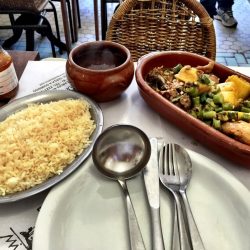 First was Espirito Santa Restaurant by Chef Natacha Fink. where you can not only try the traditional Moqueca, but also amazing fresh options and traditional recipes from the Amazons, created using international gourmet techniques. And trust me, the fusion is impeccable.
Another fantastic option, only steps away, will be Bar do Mineiro Restaurant. Perhaps this one more local and daunting, if you venture to try the classic Feijoada.
Make sure to spend sometime exploring the center of Santa Teresa, it is very interesting and its bohemian personality is rather contagious. Just walk around and do not forget to visit the famous Escadaria Selaron ( the famous stairs of Santa Teresa ). Once ready to move on, get back to the center of Santa Teresa, to take the Tram all the way to Lapa and thought the aqueducts dating from the 18th century. Next stop upon arrival to the Lapa Tram Station, would be the Rio de Janeiro Cathedral, only five minutes walk away.
First was Espirito Santa Restaurant by Chef Natacha Fink. where you can not only try the traditional Moqueca, but also amazing fresh options and traditional recipes from the Amazons, created using international gourmet techniques. And trust me, the fusion is impeccable.
Another fantastic option, only steps away, will be Bar do Mineiro Restaurant. Perhaps this one more local and daunting, if you venture to try the classic Feijoada.
Make sure to spend sometime exploring the center of Santa Teresa, it is very interesting and its bohemian personality is rather contagious. Just walk around and do not forget to visit the famous Escadaria Selaron ( the famous stairs of Santa Teresa ). Once ready to move on, get back to the center of Santa Teresa, to take the Tram all the way to Lapa and thought the aqueducts dating from the 18th century. Next stop upon arrival to the Lapa Tram Station, would be the Rio de Janeiro Cathedral, only five minutes walk away.
 The Tram service in Santa Teresa is free of charge, and it will take you on a 10 minutes ride, from Morro Santa Teresa, all the way down to Lapa neighborhood and Terminal Tram Station, after crossing the Lapa Aqueducts. The tram has been designated a national historic monument and it ranks as one of the oldest city trams in the world plus the oldest electric railway in all of Latin America.
The Tram service in Santa Teresa is free of charge, and it will take you on a 10 minutes ride, from Morro Santa Teresa, all the way down to Lapa neighborhood and Terminal Tram Station, after crossing the Lapa Aqueducts. The tram has been designated a national historic monument and it ranks as one of the oldest city trams in the world plus the oldest electric railway in all of Latin America.
 The Cathedral of Rio de Janeiro, better known as the Metropolitan Cathedral of Rio de Janeiro, is dedicated to Saint Sebastian, the patron saint of Rio de Janeiro. Designed by Edgar Fonseca in a modern style based on Mayan architectural style of pyramids. Built between 1964 and 1979.
But the adventure continues, if you wish to do so. Next take a stroll across Downtown all the way to the new district of Puerto Maravilha. There you will find the Museu do Amanha, by Santiago Calatrava. ( I strongly recommend buying your tickets for the Museum online ).
The Cathedral of Rio de Janeiro, better known as the Metropolitan Cathedral of Rio de Janeiro, is dedicated to Saint Sebastian, the patron saint of Rio de Janeiro. Designed by Edgar Fonseca in a modern style based on Mayan architectural style of pyramids. Built between 1964 and 1979.
But the adventure continues, if you wish to do so. Next take a stroll across Downtown all the way to the new district of Puerto Maravilha. There you will find the Museu do Amanha, by Santiago Calatrava. ( I strongly recommend buying your tickets for the Museum online ).
 Sunset was about to hit, it was time to look for the best options to enjoy a beer o r caipirinha, with an amazing view, followed by a nice meal. And, indeed, I found two options, totally new to me. The first one very casual and simple, but featuring stunning sunset and panoramic view at the Forte de Copacabana at Copacabana Beach. The second one, more formal at the brand new Hotel Yoo2 Rio in Botafogo.
As I’ve said, I have been many times to Rio de Janeiro, and have never before paid attention to the Forte de Copacabana, at the end of Copacabana Beach towards Apoador and Ipanema Beach. And wow, I could not believe how I have missed this place for so many years. What I did like most about it, is that like me, many other tourist are not even aware of it, therefore it is very quiet. Since it was still early, and sunset still was minutes away from hitting Copacabana Beach, I decided to explore the Forte de Copacabana, which was very interesting.
OK – 5.30PM and it was the perfect time to seat over a chilled local beer and some of my favorite cod fish balls with lime, and enjoy the sunset. Of course after sunset, once it got dark and the lamps went on, we stayed there over Caipirinhas and shrimp moquecas till 10PM. There are two restaurants, and you may choose the one that is best to your liking.
The other options I tried, on a different evening, was this time the Rooftop overlooking Botafogo, the Sugar Loaf and the Christ Redeemer, followed by dinner at their restaurant, at the brand new Yoo2 Hotel Rio in Botafogo. The hotel is lovely, the rooftop is fantastic with a nice menu of Tapas and drinks. The restaurant, on the other hand, hmmmm nothing special to be honest, decent food but totally forgettable. Let’s give them sometime to settle-down, since they have just opened.
Sunset was about to hit, it was time to look for the best options to enjoy a beer o r caipirinha, with an amazing view, followed by a nice meal. And, indeed, I found two options, totally new to me. The first one very casual and simple, but featuring stunning sunset and panoramic view at the Forte de Copacabana at Copacabana Beach. The second one, more formal at the brand new Hotel Yoo2 Rio in Botafogo.
As I’ve said, I have been many times to Rio de Janeiro, and have never before paid attention to the Forte de Copacabana, at the end of Copacabana Beach towards Apoador and Ipanema Beach. And wow, I could not believe how I have missed this place for so many years. What I did like most about it, is that like me, many other tourist are not even aware of it, therefore it is very quiet. Since it was still early, and sunset still was minutes away from hitting Copacabana Beach, I decided to explore the Forte de Copacabana, which was very interesting.
OK – 5.30PM and it was the perfect time to seat over a chilled local beer and some of my favorite cod fish balls with lime, and enjoy the sunset. Of course after sunset, once it got dark and the lamps went on, we stayed there over Caipirinhas and shrimp moquecas till 10PM. There are two restaurants, and you may choose the one that is best to your liking.
The other options I tried, on a different evening, was this time the Rooftop overlooking Botafogo, the Sugar Loaf and the Christ Redeemer, followed by dinner at their restaurant, at the brand new Yoo2 Hotel Rio in Botafogo. The hotel is lovely, the rooftop is fantastic with a nice menu of Tapas and drinks. The restaurant, on the other hand, hmmmm nothing special to be honest, decent food but totally forgettable. Let’s give them sometime to settle-down, since they have just opened.
 Another day was about to begin. The sun was rising and I was awake for an exciting – still way too early – morning, scouting new venues to host a private Champagne Brunch with breathtaking view of Rio de Janeiro. Not an easy task, but we did find the perfect one, and I must say, it is my new hotel crush in Rio de Janeiro.
The rest of my time in Rio de Janeiro, went along reining the world of luxury travel – literally, planing unique and bespoke travel experiences for my clients. Oh yes … and also eating as many Cod Fish fried balls as I could… ha ha ha ….
Was time to say goodbye to Rio de Janeiro and head to my next destination…. Quite an experience attending my first ever Olympics Games.
Another day was about to begin. The sun was rising and I was awake for an exciting – still way too early – morning, scouting new venues to host a private Champagne Brunch with breathtaking view of Rio de Janeiro. Not an easy task, but we did find the perfect one, and I must say, it is my new hotel crush in Rio de Janeiro.
The rest of my time in Rio de Janeiro, went along reining the world of luxury travel – literally, planing unique and bespoke travel experiences for my clients. Oh yes … and also eating as many Cod Fish fried balls as I could… ha ha ha ….
Was time to say goodbye to Rio de Janeiro and head to my next destination…. Quite an experience attending my first ever Olympics Games.
By Carlos Melia – Full Story at the Carlos Melia Blog
Brazil Gay Travel Resources
]]>
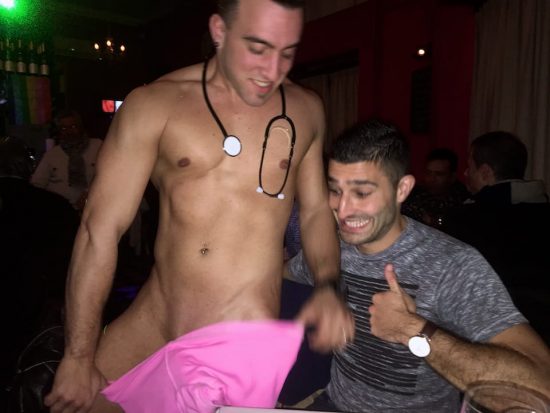 Fresh off the plane, our Porteño friends Pablo and Gustavo welcomed us, and took us straight to the Pepo Pepona gay restaurant in Palermo so we could have our first taster of the famous Argentinian steak.
Just as we were tucking into our bife de chorizo, the restaurant’s entertainment started: a handsome (extremely well endowed!) Argentinian lad came gyrating from table to table, quickly loosing all his clothes. At that moment we knew we were going to enjoy this city a lot!
WHY IS GAY BUENOS AIRES SO GAY FRIENDLY?
Argentina is extremely progressive with LGBT rights. It was the first country in Latin America to legalise gay marriage in July 2010, which included full adoption rights. The right to change legal gender has been in place since 2012 and anti discrimination laws are in full force in Rosario and Buenos Aires. Even the more conservative city of Córdoba has an active gay scene.
Fresh off the plane, our Porteño friends Pablo and Gustavo welcomed us, and took us straight to the Pepo Pepona gay restaurant in Palermo so we could have our first taster of the famous Argentinian steak.
Just as we were tucking into our bife de chorizo, the restaurant’s entertainment started: a handsome (extremely well endowed!) Argentinian lad came gyrating from table to table, quickly loosing all his clothes. At that moment we knew we were going to enjoy this city a lot!
WHY IS GAY BUENOS AIRES SO GAY FRIENDLY?
Argentina is extremely progressive with LGBT rights. It was the first country in Latin America to legalise gay marriage in July 2010, which included full adoption rights. The right to change legal gender has been in place since 2012 and anti discrimination laws are in full force in Rosario and Buenos Aires. Even the more conservative city of Córdoba has an active gay scene.

 Romance is everywhere in gay Buenos Aires. The Porteños (local folk of the big capital city) are extremely passionate – and boy do they know how to celebrate being in love. Whether it’s taking a stroll in charming Puerto Madera, getting intimate while dancing Argentinian Tango or taking a picnic in one of the many beautiful gardens, the opportunities to spend a special moment with you lover are endless. Here are our top 5 romantic things to do in Buenos Aires.
#1 WATCH A TANGO SHOW
Tango is the romance of Argentina. This sensual dance which originates from Río de la Plata is so mesmerising that you could watch it for hours and not blink an eye. A candlelit dinner while watching a tango show is one of the best memories we have of Buenos Aires. There are plenty to choose from but our favourite which we absolutely recommend is Rojo Tango.
The setting for this intimate experience is in the luxurious Faena hotel in Puerto Madero. The dinner includes a three course Argentinian meal with drinks followed by an unforgettable show. Rojo Tango dinner and show starts from $298 per person.
Romance is everywhere in gay Buenos Aires. The Porteños (local folk of the big capital city) are extremely passionate – and boy do they know how to celebrate being in love. Whether it’s taking a stroll in charming Puerto Madera, getting intimate while dancing Argentinian Tango or taking a picnic in one of the many beautiful gardens, the opportunities to spend a special moment with you lover are endless. Here are our top 5 romantic things to do in Buenos Aires.
#1 WATCH A TANGO SHOW
Tango is the romance of Argentina. This sensual dance which originates from Río de la Plata is so mesmerising that you could watch it for hours and not blink an eye. A candlelit dinner while watching a tango show is one of the best memories we have of Buenos Aires. There are plenty to choose from but our favourite which we absolutely recommend is Rojo Tango.
The setting for this intimate experience is in the luxurious Faena hotel in Puerto Madero. The dinner includes a three course Argentinian meal with drinks followed by an unforgettable show. Rojo Tango dinner and show starts from $298 per person.
 Periodically we’ll feature one of our properties here to let our readers know about some great gay friendly places to stay:
Argentina is a fiery beacon of fabulousness in Latin America, which really embraces LGBT travellers. Perhaps our biggest test of how gay friendly a destination is: the response when we initially make contact with a few of the hotels and ask them if they’re ok hosting a gay couple, who want to sleep in a double bed.
Awkward silence? Straight out “no thanks we don’t do any of that here!” (yup – happened once in Crete, Greece). Or instead, a positive, welcoming response, baffled at the need to even ask this question in the first place?
Fortunately in Buenos Aires, we only ever got the latter response. Here’s our 5 favourite and unique gay friendly hotels to stay in Buenos Aires following our 2 months visit in this pink friendly city.
Periodically we’ll feature one of our properties here to let our readers know about some great gay friendly places to stay:
Argentina is a fiery beacon of fabulousness in Latin America, which really embraces LGBT travellers. Perhaps our biggest test of how gay friendly a destination is: the response when we initially make contact with a few of the hotels and ask them if they’re ok hosting a gay couple, who want to sleep in a double bed.
Awkward silence? Straight out “no thanks we don’t do any of that here!” (yup – happened once in Crete, Greece). Or instead, a positive, welcoming response, baffled at the need to even ask this question in the first place?
Fortunately in Buenos Aires, we only ever got the latter response. Here’s our 5 favourite and unique gay friendly hotels to stay in Buenos Aires following our 2 months visit in this pink friendly city.
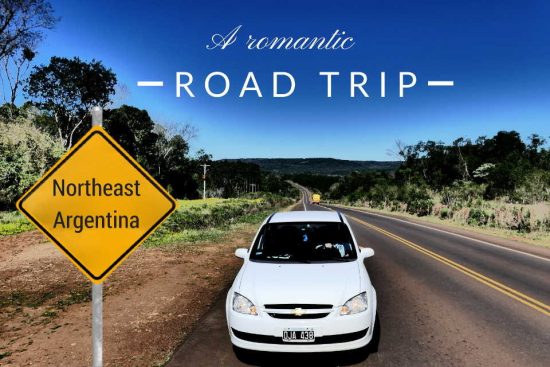 Poor Niagara!”
…so said the late Eleanor Roosevelt when she first came face to face with the almighty Iguazú Falls back in 1944.
The famous Falls are a bucket list destination for pretty much all travellers visiting Latin America. If it isn’t, it sure as hell should be. You can stand for hours marvelling at this sheer force of naturhere – spell bound, your hairs standing on end, getting completely soaked from the powerful spray, but without a care in the world.
It’s truly a mesmerising experience.
The Iguazú Falls are located in Northeast Argentina in the Misiones province, straddling the Brazilian border. Most visitors to Argentina make this their main destination after Buenos Aires, only spending 2 or 3 nights in Puerto Iguazú before moving on to another destination.
Poor Niagara!”
…so said the late Eleanor Roosevelt when she first came face to face with the almighty Iguazú Falls back in 1944.
The famous Falls are a bucket list destination for pretty much all travellers visiting Latin America. If it isn’t, it sure as hell should be. You can stand for hours marvelling at this sheer force of naturhere – spell bound, your hairs standing on end, getting completely soaked from the powerful spray, but without a care in the world.
It’s truly a mesmerising experience.
The Iguazú Falls are located in Northeast Argentina in the Misiones province, straddling the Brazilian border. Most visitors to Argentina make this their main destination after Buenos Aires, only spending 2 or 3 nights in Puerto Iguazú before moving on to another destination.
 Confession: I almost didn’t get on my plane to Colombia because in the days leading up to my departure, I got scared. I spent the last few hours before my flight departure in agony, going back and forth about canceling my flight. I had just read this article:
Solo Female Going to Colombia? Just Don’t.
I came across it the very day before my flight, and reading the headline alone made me wonder if I should read the article or not. It wasn’t just that article: a few days earlier during a travel meetup, a friend of mine offhandedly mentioned to me that her friend recently got back from Colombia where she and her friend had being robbed at gunpoint and lost everything.
I was scared, if not terrified.
Was I crazy for traveling to Colombia as a solo female traveler, just as many family members and friends suggested I was when I told them I had purchased a plane ticket to Cartagena? Even though the country has gotten considerably safer in recent years, there is still a government warning for travelers to Colombia in place.
Confession: I almost didn’t get on my plane to Colombia because in the days leading up to my departure, I got scared. I spent the last few hours before my flight departure in agony, going back and forth about canceling my flight. I had just read this article:
Solo Female Going to Colombia? Just Don’t.
I came across it the very day before my flight, and reading the headline alone made me wonder if I should read the article or not. It wasn’t just that article: a few days earlier during a travel meetup, a friend of mine offhandedly mentioned to me that her friend recently got back from Colombia where she and her friend had being robbed at gunpoint and lost everything.
I was scared, if not terrified.
Was I crazy for traveling to Colombia as a solo female traveler, just as many family members and friends suggested I was when I told them I had purchased a plane ticket to Cartagena? Even though the country has gotten considerably safer in recent years, there is still a government warning for travelers to Colombia in place.
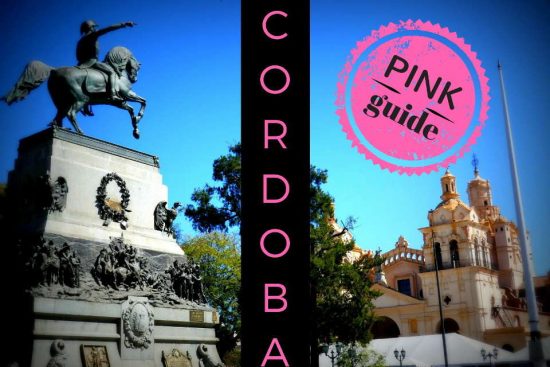 Where did all the young pretty Argentinian gay boys go? Córdoba!
This is the geographical heart of Argentina, famous for having the country’s oldest university and one of the fewest offering free education for all. As a result, Córdoba has a large student population – some claim up to 20% of its 1.4 million residents. Córdoba’s second biggest city brings with it a fun and exciting, albeit small gay scene, especially in the very Bohemian neighbourhood called Güemes.
WHERE IS GAY CÓRDOBA?
Córdoba is located in the centre of Argentina, around 700km (435 miles) Northwest of Buenos Aires. It is surrounded by picturesque valleys and mountains, called the Sierras de Córdoba, ideal for us adventure seeking nature lovers.
The Córdoba Province is especially famous for having the best, most fresh air in Argentina, thereby making it a place where Argentinians like to come to relax.
Where did all the young pretty Argentinian gay boys go? Córdoba!
This is the geographical heart of Argentina, famous for having the country’s oldest university and one of the fewest offering free education for all. As a result, Córdoba has a large student population – some claim up to 20% of its 1.4 million residents. Córdoba’s second biggest city brings with it a fun and exciting, albeit small gay scene, especially in the very Bohemian neighbourhood called Güemes.
WHERE IS GAY CÓRDOBA?
Córdoba is located in the centre of Argentina, around 700km (435 miles) Northwest of Buenos Aires. It is surrounded by picturesque valleys and mountains, called the Sierras de Córdoba, ideal for us adventure seeking nature lovers.
The Córdoba Province is especially famous for having the best, most fresh air in Argentina, thereby making it a place where Argentinians like to come to relax.
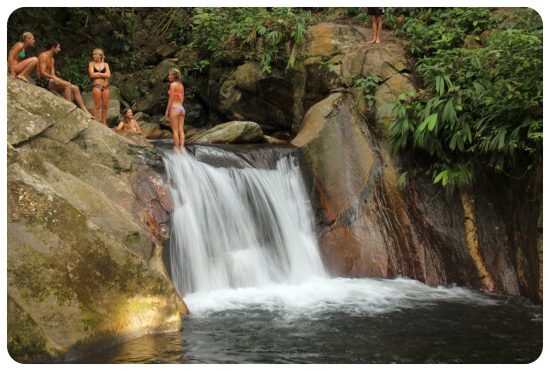 Minca wasn’t in my original travel plans for Colombia, but as we were leaving Cartagena for Santa Marta, one of my Instagram followers remarked that I had to visit Minca. I had never even heard of Minca but a quick Google search revealed that it was a small mountain village close to Santa Marta. The pictures looked lovely, travelers were talking about waterfall hikes, good vegetarian food, local coffee farms, and a giant hammock with mountain views – that’s all we needed to hear to convince us to make the detour. Plus: Cooler temperatures would be welcome after Santa Marta, which seemed to be even hotter and more humid than Cartagena.
The ride to Minca was quick – within an hour of driving up a winding mountain road we found ourselves in the village, and within another hour, we had explored it entirely – yes, that’s how small it is.
The chillier weather that had been mentioned was an illusion: it was still 86 degrees! We did the only sensible thing: we grabbed our swimsuits and started the hike to the first of two waterfalls I wanted to visit, both of which were within walking distance of the village (but in different directions).
Minca wasn’t in my original travel plans for Colombia, but as we were leaving Cartagena for Santa Marta, one of my Instagram followers remarked that I had to visit Minca. I had never even heard of Minca but a quick Google search revealed that it was a small mountain village close to Santa Marta. The pictures looked lovely, travelers were talking about waterfall hikes, good vegetarian food, local coffee farms, and a giant hammock with mountain views – that’s all we needed to hear to convince us to make the detour. Plus: Cooler temperatures would be welcome after Santa Marta, which seemed to be even hotter and more humid than Cartagena.
The ride to Minca was quick – within an hour of driving up a winding mountain road we found ourselves in the village, and within another hour, we had explored it entirely – yes, that’s how small it is.
The chillier weather that had been mentioned was an illusion: it was still 86 degrees! We did the only sensible thing: we grabbed our swimsuits and started the hike to the first of two waterfalls I wanted to visit, both of which were within walking distance of the village (but in different directions).
 Steak is big business in Argentina. There’s more cows than people here and as a result the Argentinians have made steak a work of art.
There’s plenty of excellent parillas to enjoy some of the best steaks in the country, particularly in Buenos Aires, but we also wanted to take back this little souvenir with us.
Chimi churri is a popular Argentinian parsley based sauce to accompany a nicely prepared steak. We’ve included a quick easy recipe for it here.
The meat we used was matambre, which is a very thin cut of beef taken between the skin and ribs of the cow, like flank steak. Other personal favourites include bife de chorizo (sirloin) and ojo de bife (rib eye).
Our recipe for Argentinian steak with chimi churri involved baking the meat for around 1 hour and served with potatoes and vegetables cooked with it.
Steak is big business in Argentina. There’s more cows than people here and as a result the Argentinians have made steak a work of art.
There’s plenty of excellent parillas to enjoy some of the best steaks in the country, particularly in Buenos Aires, but we also wanted to take back this little souvenir with us.
Chimi churri is a popular Argentinian parsley based sauce to accompany a nicely prepared steak. We’ve included a quick easy recipe for it here.
The meat we used was matambre, which is a very thin cut of beef taken between the skin and ribs of the cow, like flank steak. Other personal favourites include bife de chorizo (sirloin) and ojo de bife (rib eye).
Our recipe for Argentinian steak with chimi churri involved baking the meat for around 1 hour and served with potatoes and vegetables cooked with it.
 So I landed in Rio de Janeiro, for two weeks, during the 2016 Rio Summer Olympics. I have been in Rio countless times, but always discovering new locations, hotels, restaurants and attractions. These are some of my findings during my recent visit. Also see all my minute-to-minute past/current/future posts and experiences in Rio de Janeiro.
So I landed in Rio de Janeiro, for two weeks, during the 2016 Rio Summer Olympics. I have been in Rio countless times, but always discovering new locations, hotels, restaurants and attractions. These are some of my findings during my recent visit. Also see all my minute-to-minute past/current/future posts and experiences in Rio de Janeiro.






 I’d been intrigued by Colombia’s Lost City ever since I had heard about it a few years ago: a fabled city of an ancient civilization hidden deep in the jungle, comparable to Machu Picchu in neighboring Peru, but much older (650 years older, to be precise) and far off the beaten tourist track, compared to the famous Lost City Of The Incas.
When the lost city of Teyuna was discovered in 1972, much of it had been taken back by the jungle, overgrown by trees and ferns, the centuries-old rocks covered in green moss. Only in the past decade tourists have started to discover this trek, but only few dare to make their way to the ‘Ciudad Perdida’.
That is because it isn’t easy to get to Teyuna – it takes a 2-day walk through the jungle to get to the bottom of the mountain on top of which the city sits, followed by a 2-day walk back to civilization, and the hike isn’t an easy one: steep mountains need to be ascended and descended, rivers need to be crossed, jungle forests need to be traversed – and all of this in temperatures in the 90s (33C), coupled with the humidity of the rain forest.
I’d been intrigued by Colombia’s Lost City ever since I had heard about it a few years ago: a fabled city of an ancient civilization hidden deep in the jungle, comparable to Machu Picchu in neighboring Peru, but much older (650 years older, to be precise) and far off the beaten tourist track, compared to the famous Lost City Of The Incas.
When the lost city of Teyuna was discovered in 1972, much of it had been taken back by the jungle, overgrown by trees and ferns, the centuries-old rocks covered in green moss. Only in the past decade tourists have started to discover this trek, but only few dare to make their way to the ‘Ciudad Perdida’.
That is because it isn’t easy to get to Teyuna – it takes a 2-day walk through the jungle to get to the bottom of the mountain on top of which the city sits, followed by a 2-day walk back to civilization, and the hike isn’t an easy one: steep mountains need to be ascended and descended, rivers need to be crossed, jungle forests need to be traversed – and all of this in temperatures in the 90s (33C), coupled with the humidity of the rain forest.